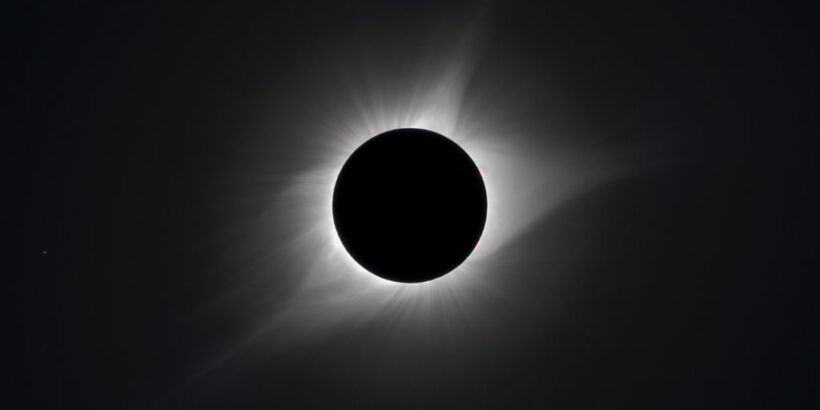Are you wanting to experience the amazing total solar eclipse of 2024 and thinking about traveling to do so?
Well, before you make your final decision of where to go, there are some things you need to keep in mind.
From knowing how to perfectly time your visit so that you can experience the full totality to some of the important details about the eclipse, I cover all the major things you need to know so that you can confidently plan your chase of the 2024 solar eclipse.
If you’re coming from a video and wanting to check the duration of your totality, click here to find out more.
Table of Contents
Solar eclipse overview
Let’s start up with the basics.
What exactly is a solar eclipse?
Well, there are three different types of solar eclipses: annular, partial, and total.
The type of eclipse happening on April 8, 2024 is a total solar eclipse (the best kind).
A total solar eclipse occurs when the Moon completely covers the Sun, obscuring its entire visible disk from view. This celestial event creates a brief period of darkness during the day and allows the Sun’s outer atmosphere, known as the corona, to become visible around the Moon’s dark silhouette.
The sky gets about as dark as near the end of civil twilight, which means that you can see some of the planets and brightest stars during the peak of the eclipse!
If you have binoculars or a telescope you might be able to catch some of the bright deep sky objects although time is precious during an eclipse so you might want to leave that quest for the pros.

A few things to know about the 2024 solar eclipse
Before we jump into a bunch of logistical things it helps to know exactly why the 2024 solar eclipse is such a big deal why it is worth all the effort to see it.
It’s very rare to actually be able to see a total solar eclipse
The first thing to know is that a total solar eclipse is a rare event.
While they happen on average about every 18 months on the planet, they only occur at the same location about once every 300 to 400 years.
And even if you’re thinking that you’ll just hop across the country to catch the next eclipse, be aware that the next total solar eclipse that streaks across the US, won’t happen for another 20 years after this one (in 2045).
Duration and totality
The duration, which is the amount of time from the beginning of the eclipse to the end, will vary based on your location but you could be looking at around 2.5 hours.
However, the pinnacle of a total solar eclipse aka the “totality” is a much shorter event.
Totality is the brief moment during a total solar eclipse when the Moon completely covers the Sun, plunging the area into darkness and revealing the Sun’s outer atmosphere, known as the “corona.”
The mesmerizing sight of the corona’s captivating greyish flares sets total eclipses apart from annular eclipses, creating an incredibly striking and awe-inspiring experience.
In fact, lots of people describe this moment, which can involve flashes of red and pinkish glowing gas, as something life-changing that they never forget.
“comparing what you see during an eclipse to the darkness at night is like comparing an ocean to a teardrop.” ― Wendy Mass, Every Soul a Star
“The experience of seeing a total solar eclipse is something that stays with you forever. It is a moment of pure magic, a reminder of the beauty and power of the universe.” – Chris Hadfield
Perhaps then it’s not a surprise that a total solar eclipse occurring back on May 28, 585 BCE was responsible for ending a border war that had gone on for over five years near present-day Turkey. That’s right, historical records suggest that the warring parties interpreted the celestial event as a sign to cease hostilities and negotiate a peaceful resolution.
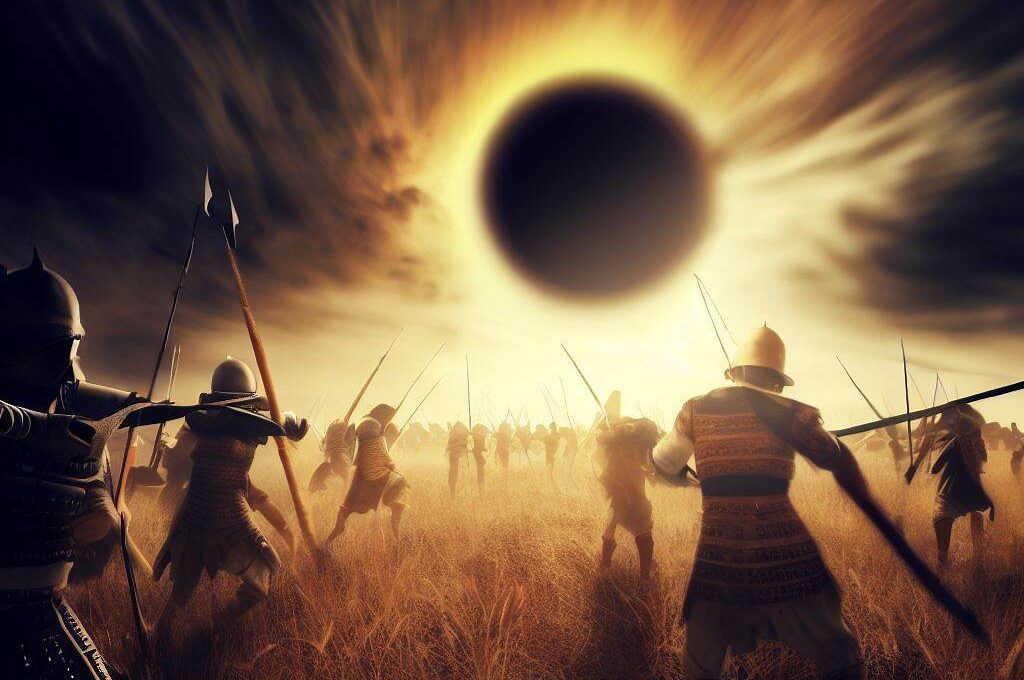
The size of the path of totality, which is just the Moon’s shadow (and called the “Umbra”) is usually about 100 miles wide and this eclipse will be about 115 miles (185 km) wide. It will cross fifteen states from Texas to Maine, moving at speeds ranging from 1620 mph near San Antonio to 4400 mph in Newfoundland.
Here’s a good interactive map to check out the path and zoom in on your location.
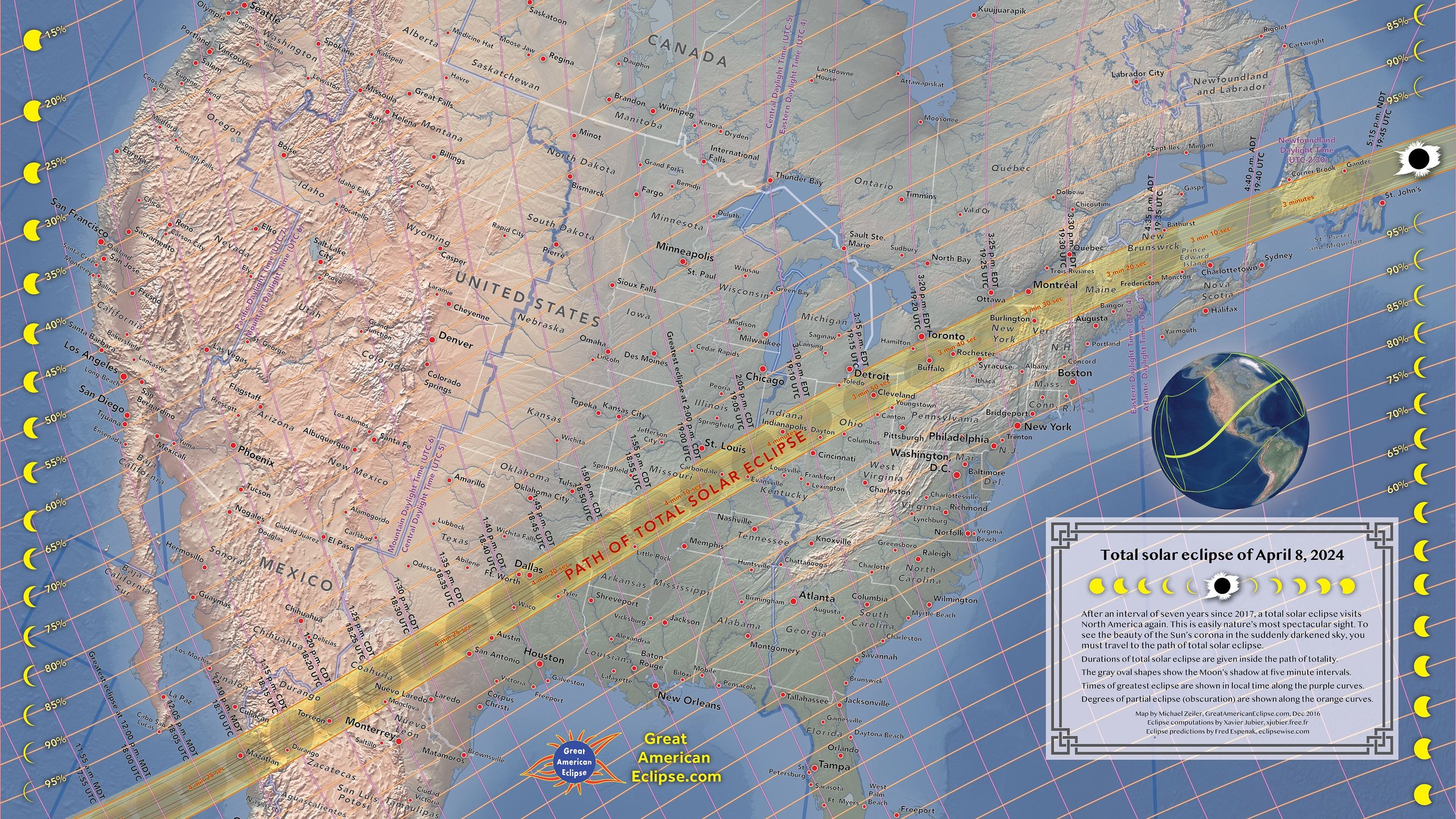
As far as what time the totality will be at your location you’ll have to check on that, but for the most part the eclipse will take place in the early to mid afternoon. Use the graphics on this page to help you see exactly what time to expect the eclipse.
Keep in mind the duration of totality is not always the same.
On April 8, 2024, the maximum duration of totality anywhere along the eclipse path will be 4 minutes 28 seconds which is almost twice as long as the eclipse of 2017 and double the US average time. Some totalities can last only mere seconds, though the longest totality will be 7 minutes 29 seconds in 2186.
For the 2024 eclipse, some places may only have one to two minutes of totality so if you are planning your visit of where to stay, consider choosing a place with the maximum duration so that you can get the full experience.
The totality calculator
You can use this calculator to figure out how long the totality will be based on your exact longitude and latitude and elevation.
If you happen to be outside of the path of totality, you can still see the eclipse but you will experience a partial eclipse. Pretty much everyone in the contiguous US will see at the very least a partial eclipse.
But keep in mind that even if you are experiencing a 99% partial eclipse (just outside the path of totality), you’re not going to get the awe-inspiring total solar eclipse effect. It’s sort of an all or nothing thing.
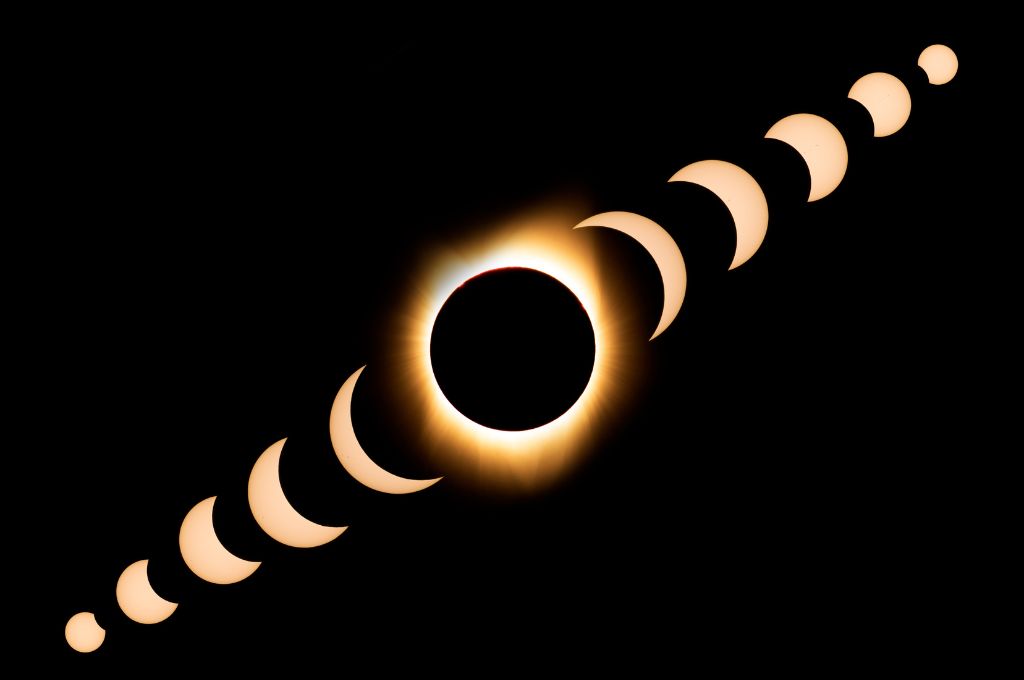
Book your hotel but remain flexible
As of the summer of 2023, lots of hotels are already completely sold out that are located in or near the path of totality.
The good thing about this eclipse is that it is that the path of totality is going to run very close to some major cities so you may not need a hotel or you should be able to find hotels within somewhat close vicinity of the path.
Here is a list of some of the major cities the eclipse will be going over or very close to (remember, not all of these are in the middle of the path of totality):
- San Antonio, TX
- Austin, TX
- Waco, TX
- Dallas, TX
- Ft. Worth, TX
- Little Rock, AR
- Indianapolis, IN
- Dayton, OH
- Toledo, OH
- Cleveland, OH
- Buffalo, NY
- Rochester, NY
- Syracuse, NY
- Burlington, VT
- Montpelier, VT.
Don’t forget to consider that we don’t know what the weather will be like come April 8, 2024. Historically, there is a better chance of clouds the more north you go but springtime weather can be pretty unpredictable.
It will be best to remain as flexible as possible so that you can venture out somewhere else and potentially catch better weather. Typically, you can have a good idea of the cloud forecast a couple of days in advance. For this reason, book hotel room rates that allow you to cancel just before your stay.
This also means you may be able to find last minute hotels because other people will be canceling if they have booked multiple hotels in different locations.
Get your eclipse glasses now (but make sure they are reputable)
You definitely want to be careful when viewing a solar eclipse so as to prevent any major damage to your eyes and typically the easiest way to view it safely is to just get a pair of eclipse glasses.
These are special glasses you can purchase that allow you to gaze upon the sun without any issues.
But a couple of things to say about these.
First, you need to make sure you’re getting them from a reputable brand so that they actually work and don’t damage your eyes. Unfortunately, there have been counterfeit solar eclipse glasses reportedly sold. You can find a list of reputable brands at this link here.
Celestron is one of my most trusted brands for astronomy gear and they have an entire kit you can purchase. They are certified to comply with the ISO 12312-2 international safety standards and it also comes with a filter you can use for images and video of the eclipse with your smartphone, DSLR, or point-and-shoot camera.
I highly suggest that you purchase glasses now because as the eclipse grows closer, it’s possible it could become much more difficult to find these and the price may go up.
Also, you want to make sure that your glasses are not damaged with cuts or scratches. If you wait until the last minute you won’t be able to buy a replacement pair.
You can find some online at places like Amazon (like with the link above) but you have to be careful about the counterfeiters. If you have an astronomy museum or gift shop near you, that can be a great place to find quality glasses.
During totality, you can safely remove your eclipse glasses and gaze up at the Sun’s beautiful corona, which should be about as bright as the full moon.
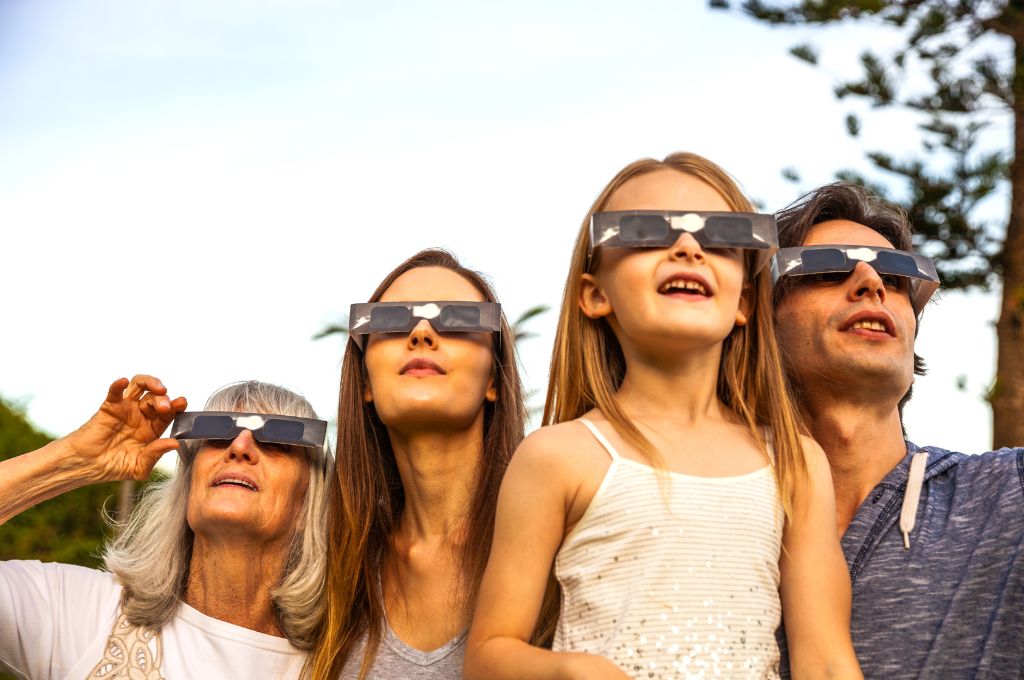
If you don’t have solar viewing glasses, you can create a pinhole projector, a safe and easy way to indirectly view the eclipse.
Poke a small hole in a piece of paper or cardboard and allow the sunlight to pass through it onto a flat, white surface, such as another piece of paper or the ground. You’ll see the sun’s image projected on the surface, and you can safely observe the eclipse’s progress.
Some people even use a colander for this!
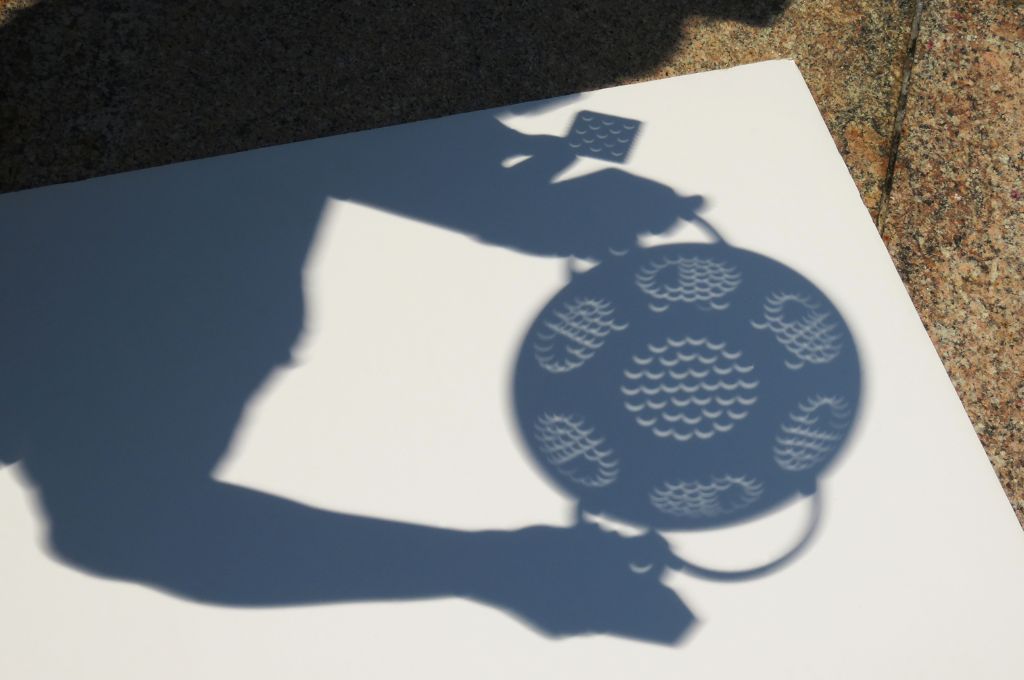
You can also create a simple solar viewing projector using a box or a similar enclosure. Cut a small hole in one side and cover it with aluminum foil. Then, make a small hole in the foil, and the projected image of the sun will appear on the opposite side of the box.
If you plan to use telescopes or binoculars to observe the eclipse, ensure they have solar filters specifically designed for solar viewing. Just be very careful and again only purchase such filters from reputable brands.
To safely take photos of a solar eclipse, you’ll need to use a solar filter specifically designed for solar viewing/photography. Never point your camera directly at the sun without this filter, as it can damage both your camera and your eyes.
Attach the solar filter securely to your camera lens, and use the camera’s live view or an LCD screen to compose and focus your shots. Avoid looking through the camera’s viewfinder while photographing the eclipse to protect your eyes from potential harm. Once again, check this link for reputable brands for filters.
On the day of the eclipse
There is a good chance that this eclipse is going to get a lot of publicity in the weeks leading up to it.
For one, there is an annular eclipse happening in October 2023 which will be a spectacular site. That’s only going to build up more excitement for the total eclipse.
So if you are planning on visiting a place within the totality path, especially in the middle of that path, be prepared for a lot of crowds in major hotspots, such as popular parks.
We plan on arriving at our destination early in the morning and setting up there several hours before the eclipse happens.
The good thing is that the eclipse is towards the beginning of April so a lot of places could have decent weather especially in the South. However, in some places it could be quite chilly so you need to be prepared for cold weather.
Try to find a place that will offer you shelter in the event of bad weather or extreme winds. The temperature could drop 10 to 20°F during the period of totality so be prepared for a short and quick drop in temperatures (and consider recording the temps).
At the same time, be mindful of buildings or trees and how they could obscure your view. Being able to view from an open area or on top of a hill would be ideal.
If you’re somewhere near animals, observe them as the eclipse begins because animals, ranging from birds to cattle, are known to exhibit odd behavior during solar eclipses.
Also don’t forget to plan out how you will handle bathroom visits.
Be prepared for potential traffic jams in the time near the eclipse, especially leaving the eclipse.
There could be a mass exodus of people heading back to major urban areas in certain parts of the country. If you head out right after the moment of totality you may be able to beat the traffic but otherwise you may want to linger around longer to wait it out.
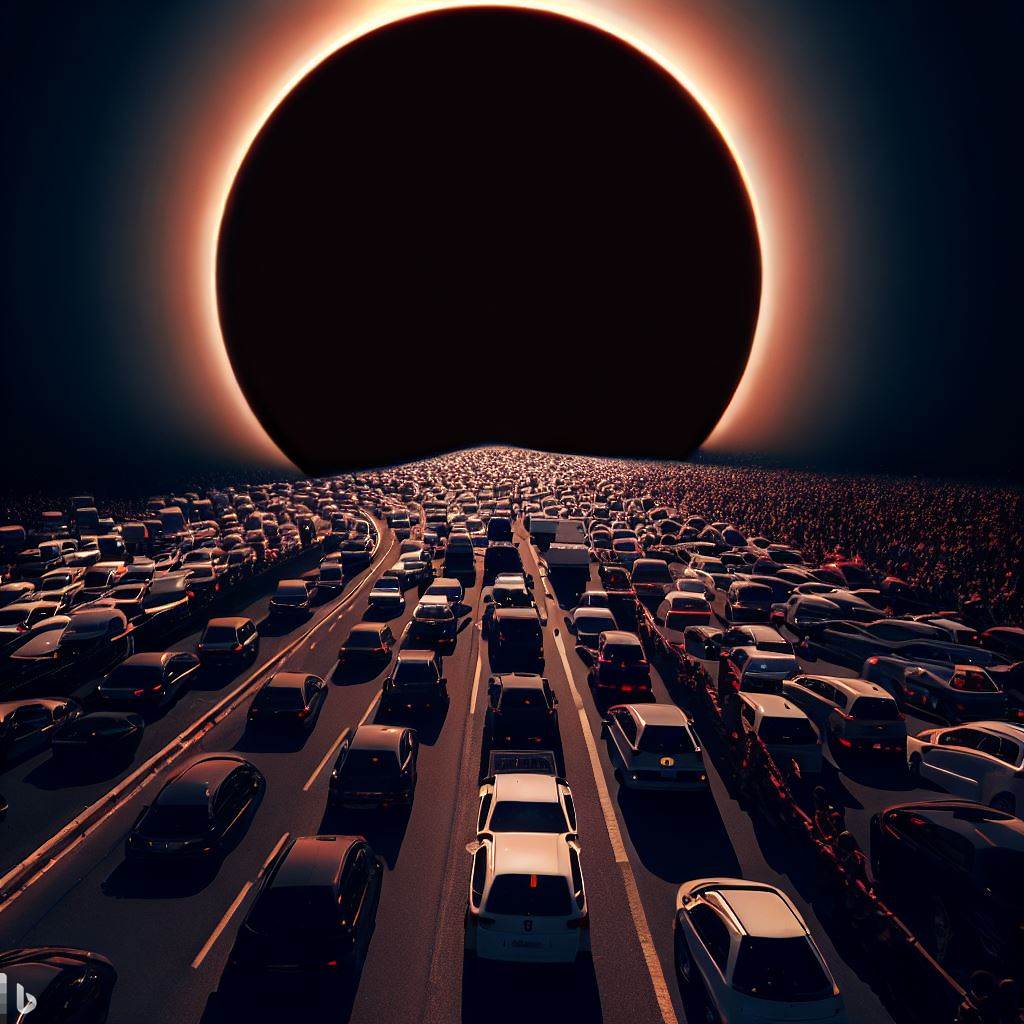
Final word
The solar eclipse of April 2024 is sitting up to be the major astronomical event in recent times.
It certainly will be seen by a lot more people than the most recent eclipse and for that reason will probably be one of the most talked about celestial events of our time.
You definitely don’t want to miss it so be sure to start making plans to experience this potentially once in a lifetime event!
Daniel Gillaspia is the Founder of UponArriving.com and the credit card app, WalletFlo. He is a former attorney turned travel expert covering destinations along with TSA, airline, and hotel policies. Since 2014, his content has been featured in publications such as National Geographic, Smithsonian Magazine, and CNBC. Read my bio.

